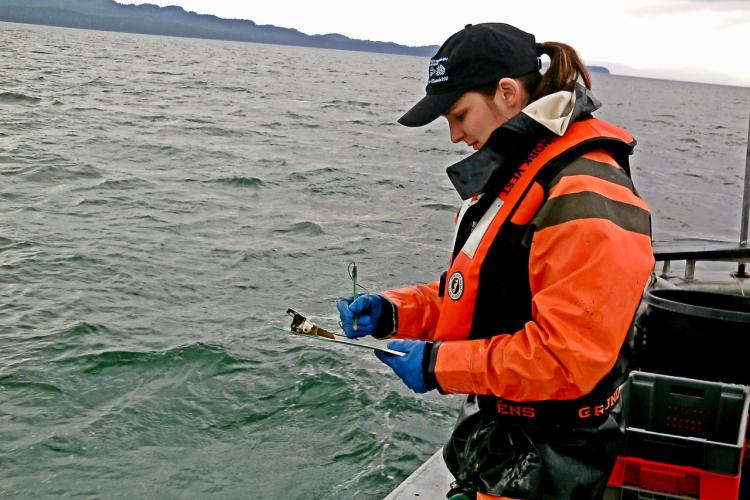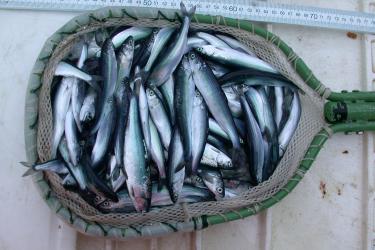Scientists in our Auke Bay Laboratories are collaborating with the Alaska Department of Fish and Game to study juvenile salmon in Southeast Alaska coastal waters.
Primary Southeast Alaska Coastal Monitoring Goals
- Understand the early marine ecology and distribution of juvenile salmon and associated species
- Build time series of oceanographic and ecological indices for the coastal waters of Southeast Alaska
- Identify factors affecting salmon productivity (e.g., climate change, prey, abundance, and predators)
- Produce data sets to evaluate hatchery and wild stock interactions, and forecast regional adult salmon returns
Southeast Alaska Coastal Monitoring (SECM) research was initiated in the spring of 1997, just prior to the onset of a strong El Niño event. Sampling has occurred annually for 20 years around Icy Strait (58°N, 136°W) in the northern region of the Gulf of Alaska. This is a principal seaward migration corridor for salmon both juveniles and returning adults.
Researchers have compiled a multi-years of biophysical data associated with juvenile salmon for the months of May, June, July, and August. Juvenile salmon and ecologically-related species are sampled with a surface trawl, a cone-shaped net, and associated oceanographic measurements are taken.
Time Series Data
- Temperature and salinity profiles
- Surface nutrients and chlorophyll
- Zooplankton (upper 20-m and integrated)
- Size, abundance, and origin of salmon
- Potential predators of juvenile salmon

Interannual variability of late spring and summer temperatures in the upper 20-m water column of Icy Strait, 1997-2016.
Some of these biophysical data are being used to forecast pink salmon returns to Southeast Alaska and to evaluate recent trends in commercial salmon harvest and ocean survival within the region. These analyses also explore the impact of large-scale, climate-driven processes on salmon year-class strength.

Average catches of juvenile salmon per surface trawl haul in Icy Strait, Southeast Alaska in June, July, and August since 1997. Catch numbers are untransformed and vessel calibrated to 20-minutes of trawling time.
This work supports the objectives of the NOAA Fisheries Strategic Plan and international science programs of the North Pacific Anadromous Fish Commission and the Pacific Salmon Commission Northern Fund. Scientists also use data from this program to inform fish stock assessments and the annual Gulf of Alaska Ecosystem Status Report.
Additional Resources
- Resource Ecology and Fisheries Management Division Trophics Interactions Meta Data
- Alaska Groundfish Diet Data
Contacts
Andrew Gray, manager, Salmon Ocean Ecology and Bycatch Analysis (SOEBA) sub-program (within the Ecosystem Monitoring and Analysis Program), Auke Bay Laboratories Division
Jim Murphy, research biologist, Ecosystem Monitoring and Analysis Program, Auke Bay Laboratories Division



